- Badallan pit
- Badallan No.2 mine
- Balbardie - old pits
- Balbardie No.1 pit
- Balbardie No.2 pit
- Balbardie No.2 mine
- Balbardie No.4 pit
- Balbardie No.5 pit
- Ballencreiff fireclay mine
- Ballencrieff - early pits
- Barbauchlaw - early pits
- Barbauchlaw No.1 pit
- Barbauchlaw No.2 pit
- Barbauchlaw No.3 pit
- Barbauchlaw No.4 pit
- Barbauchlaw No.5 pit
- Barbauchlaw No.7 pit
- Barbauchlaw No.9 pit
- Barbauchlaw No.11 pit
- Barbauchlaw No.10 pit
- Barbauchlaw No.12 pit
- Barbauchlaw No.13 pit
- Barbauchlaw No.14 pit
- Barbauchlaw No.15 pit
- Barbauchlaw No.16 pit
- Barbauchlaw No.17 pit
- Barbauchlaw No.18 pit
- Barbauchlaw No.19 pit
- Barbauchlaw No.23 pit
- Barbauchlaw Fireclay and Coal Mine
- Bathgate - old pits
- Bathville No.1 pit
- Bathville No.3 pit
- Bathville No.4 pit
- Bathville No.5 pit
- Bathville unidentified pit 1
- Bathville unidentified pit 2
- Bathville unidentified pit 3
- Benhar (Addie) No.2 pit
- Benhar No.6 and No.14 pits
- Benhar Colliery
- Benhar No.18 pit
- Benhar No.19 pit
- Benhar No.21 pit
- Benhar No.3 pit
- Benhar No.5 pit
- Benhar - old pits
- Benhar unidentified pits
- Benthead No.1 mine
- Benthead unidentified pit 1
- Benthead unidentified pit 2
- Benthead unidentified pit 3
- Benthead unidentified pit 4
- Benthead unidentified pit 5
- Benthead unidentified pit 6
- Bents mine
- Birniehill mine
- Blackrigg No. 1 & 2
- Blackrigg No.3 pit
- Boghead No.1 pit
- Boghead No.2 pit
- Boghead No.3 pit
- Boghead No.4 pit
- Boghead No.5 pit
- Boghead No.6 pit
- Boghead No.8 pit
- Boghead No.9 pit
- Boghead No.10 pit
- Boghead No.11 pit
- Boghead No.12 pit
- Boghead No.14 pit
- Boghead No.15 pit
- Boghead No.25 mine
- Braehead No. 1 pit
- Braehead No.2 pit
- Bridgecastle - early pits
- Bridgehouse - old pits
- Bridgehouse pit
- Brucefield pit
- Camps pit
- Cappers No.1 pit
- Cappers No.2 pit
- Cappers No.3 pit
- Cappers No.4 pit ?
- Colinshiel No.1 pit
- Colinshiel No.2 pit
- Colinshiel No.3 pit
- Colinshiel No.4 pit
- Cowdenhill No.1 Pit
- Craigrigg pit
- Crofthead (Stonehead) No.1 pit
- Crofthead No.2 pit
- Crofthead No.3 pit
- Crofthead No.5 & 6 pit
- Crofthead No.7 pit
- Crofthead (Stonehead) No.7 pit
- Cult pit
- Cultrigg No.1 & No.2 pits
- Cultrigg No.3 pit
- Cultrigg No.4 pit
- Cuthill mines
- Drumcross pits
- Drum No.1 & 2 pits
- Dumback No.1 mine
- Dumback No.2 mine
- East Benhar No.2 mine
- Eastfield No.1 ironstone pit
- Eastfield No.3 ironstone pit
- Eastfield No.3 coal pit
- Eastfield No.4 ironstone pit
- Eastfield No.5 pit
- Eastfield No.6 pit
- Eastfield No.8 ironstone pit
- Eastfield Eagin pit
- Eastfield Engine pit
- Eastfield unidentified pit 1
- East Handaxwood fireclay mine
- Easton No.1 pit
- Eastrigg (Craigrigg) No.1 pit
- Eastrigg (Craigrigg) No.2 pit
- Eastrigg (Craigrigg) No.3 pit
- Fallahill No.3 pit
- Fallahill No.4 pit
- Fauldhouse No.1 pit
- Fauldhouse No.1 (Knowes) pit
- Fauldhouse No.5 pit
- Fauldhouse No.8 pit
- Fauldhouse No.9 pit
- Fauldhouse No.10 pit
- Fauldhouse No.11 pit
- Fauldhouse No.13 pit
- Foulshiels No.1 & No.2 pits
- Gormyre mine
- Goukstane pit
- Greenburn pit
- Greenrigg pit
- Handaxwood No.1 pit
- Handaxwood No.2 pit
- Handaxwood No.3 pit
- Handaxwood No.4 pit
- Handaxwood No.5 pit
- Handaxwood early pits
- Handaxwood unidentified pit 1
- Handaxwood unidentified pit 2
- Handaxwood unidentified pit 3
- Handaxwood unidentified pit 4
- Handaxwood unidentified pit 5
- Handaxwood unidentified pit 6
- Handaxwood unidentified pit 7
- Handaxwood unidentified pit 8
- Handaxwood unidentified pit 12
- Handaxwood unidentified pit 13
- Handaxwood unidentified pit 14
- Handaxwood unidentified pit 15
- Harburn limestone mine
- Harthill No.1 ironstone pit
- Hartrigg or Harthill No.3
- Hartrigg No. 4 & 5 pit
- Heads mine
- Heatherfield No.4 pit
- Heatherfield No.5 pit
- Heatherfield No.6 pit
- Heatherfield No.7 pit
- Hilderston Hill pit
- Hilderston - early pits
- Hopetoun No.2 pit
- Heatherfield No.3 pit
- Hopetoun No.8 pit
- Hopetoun No.9 pit
- Hopetoun No.10 pit
- Hopetoun No.11 pit
- Hopetoun No.12 & 13 pits
- Inchcross No.1 pit
- Inchcross No.2 pit
- Kipps - early pits
- Knowton No.1 & 2 pits
- Latchburn pit
- Leadloch No.1 pit
- Leadloch No.2 pit
- Levenseat No.1 limestone pit
- Levenseat No.2 pit
- Levenseat No.3 limestone pit
- Levenseat No.3 fireclay mine
- Levenseat No.4 fireclay mine
- Levenseat No.1 & 2 fireclay mine
- Levenseat High mine
- Levenseat No.1 limestone mine
- Levenseat quarry limestone mines
- Levenseat unidentified mine
- Loganlea No.1 pit
- Loganlea No.2 pit
- Longford pit
- Mosside No.1 Pit
- Mosside No.2 pit
- Mosside No.3 pit
- Mosside No.4 mine
- Muckraw mine
- Muirhousedyke pit (1)
- Muirhousedyke pit (2)
- Muldron No.6 pit
- Muldron No.7 pit
- Muldron No.8 pit
- Muldron No.9 pit
- Muldron unidentified pit 1
- Muldron unidentified pit 2
- Muldron unidentified pit 3
- Muldron unidentified pit 4
- Muldron unidentified pit 5
- Muldron unidentified pit 6
- Muldron unidentified pit 7
- Muldron unidentified pit 8
- Muldron unidentified pit 9
- Muldron unidentified pit 11
- Muldron unidentified pit 10
- Muldron unidentified pit 12
- Murieston Limestone Mine
- Murraysgate mine
- North Cobbinshaw coal mine
- Northrigg No.2 pit
- Northrigg No.7 pit
- Northrigg No.1 mine
- Northrigg No.2 mine
- Polkemmet No.5 pit
- Polkemmet No.6 pit
- Polkemmet No.8 pit
- Polkemmet No.9 pit
- Polkemmet Colliery
- Polkemmet No.3 pit
- Polkemmet unidentified pit 1
- Polkemmet unidentified pit 2
- Polkemmet unidentified pit 3
- Polkemmet unidentified pit 4
- Pottishaw No.1 & 2 mine
- Redhouse pit
- Riddochhill No.1 pit
- Riddochhill No.2 pit
- Riddochhill Almond Mines
- Snab pit
- South Broadrigg pit
- Southrigg No. 1 & 2 pits
- Southrigg No. 3 & 4 pits
- Southrigg No. 7 & 8 pits
- Standhill No.1 pit
- Standhill No.2 pit
- Starryshaw No.1 & 2 pits
- Stonehead mine
- Stonehead No.1 pit
- Stonehead No.2 pit
- Stoneheap limestone pit
- Stoneyburn No.1 pit
- Stoneyburn No.2 pit
- Tippethill No.1 & 2 mine
- Torbane No.1 pit
- Torbane No.2 pit
- Torbane No.3 pit
- Torbanehill No.1 pit
- Torbanehill No.2 pit
- Torbanehill No.3 pit
- Torbanehill No.4 pit
- Torbanehill No.5 pit
- Torbanehill No.6 pit
- Torbanehill No.7 pit
- Torbanehill No.8 pit
- Torbanehill No. 9 pit
- Torbanehill No.10 pit
- Torbanehill No.11 pit
- Torbanehill No.12 pit
- Torbanehill No.13 pit
- Torbanehill No.14 pit
- Torbanehill No.15 pit
- Torbanehill No.16 pit
- Torbanehill No.17 pit
- Torbanehill No.18 pit
- Torbanehill No.19 pit
- Torbanehill No.20 pit
- Torbanehill No.21 pit
- Torbanehill No.24 pit
- Torbanehill No.26 pit
- Torbanehill No.29 pit
- Torbanehill Garden Pit
- Trees No.1 pit
- Trees No.2 pit
- Trees No.3 pit
- Wallhouse No.1 mine
- Westallan pit
- Westfield No.1 pit
- Westrigg No.1 pit
- Westrigg No. 2 & 3 pit
- Whitrigg No. 1 & 2 pits
- Whitrigg No. 4 Burnbrae mine
- Whitrigg No. 5 pit
- Whitrigg No.8 & 9 mine
- Woodbank Mine
- Woodend No.1 pit
- Woodend No.2 pit
- Woodend No.3 pit
- Woodend No.4 pit
- Woodend No.5 pit
- Woodmuir No.1 pit
- Woodmuir No.2 pit
- Woodmuir No.3 pit
- Woodmuir No.4 pit
- Woodmuir - early pits (south)
- Woodmuir - early pits (north)
Colinshiel No.1 pit
One of a group of Colinshiel pits in the lands of South Couston, (see Colinshiel 2, 3, & 4, also story - Atmospheric Times at Colinshiel)
R. Hynd Brown, writing in 1906, describes how the Carron Iron Company worked ironstone and coal at Colinshiel, most likely early in the 19th century, and that subsequently landowner Captain Sandilands reopened an abandoned pit (seemingly Colinshiels No.1) to serve his brickworks. The Colinshiel pits were taken on by the Shotts Iron Co. in around 1851. The pit was served by a mineral branch connecting to the NBR Blackston Branch, which was lifted soon after closure of pit in 1905.
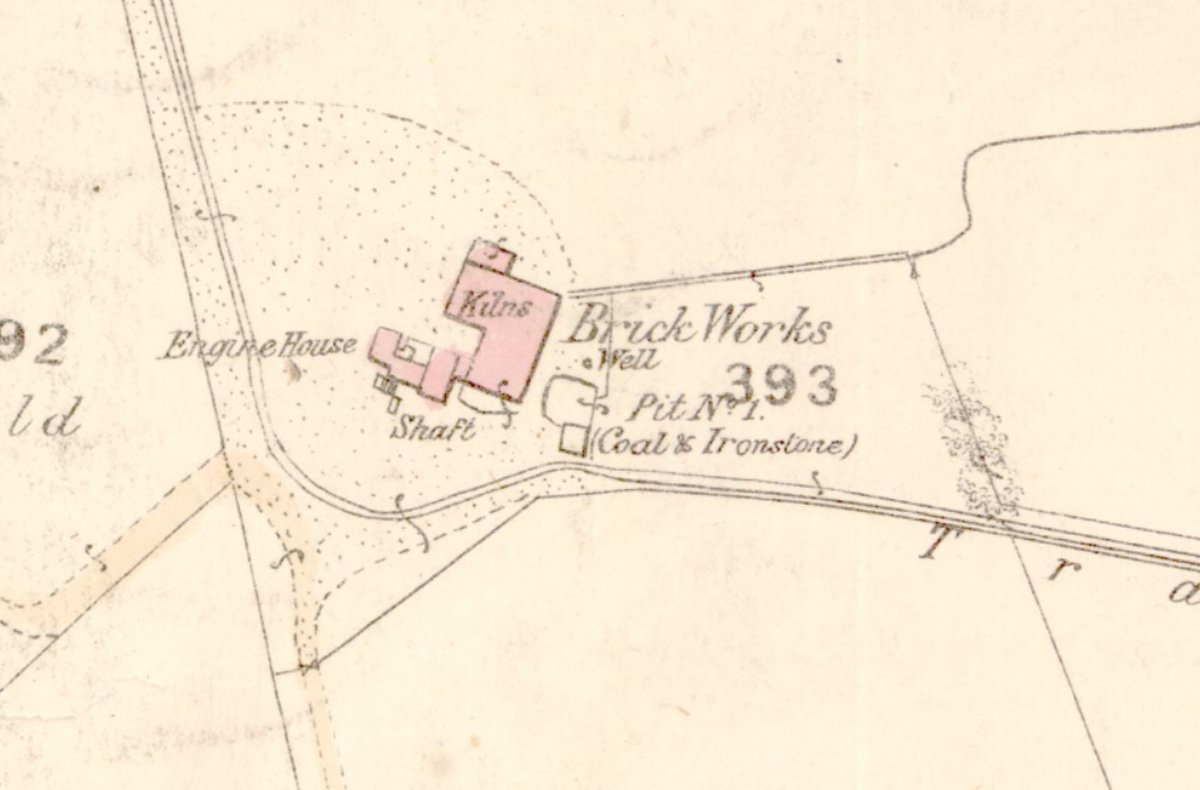
25" OS map c.1855, courtesy National Library of Scotland
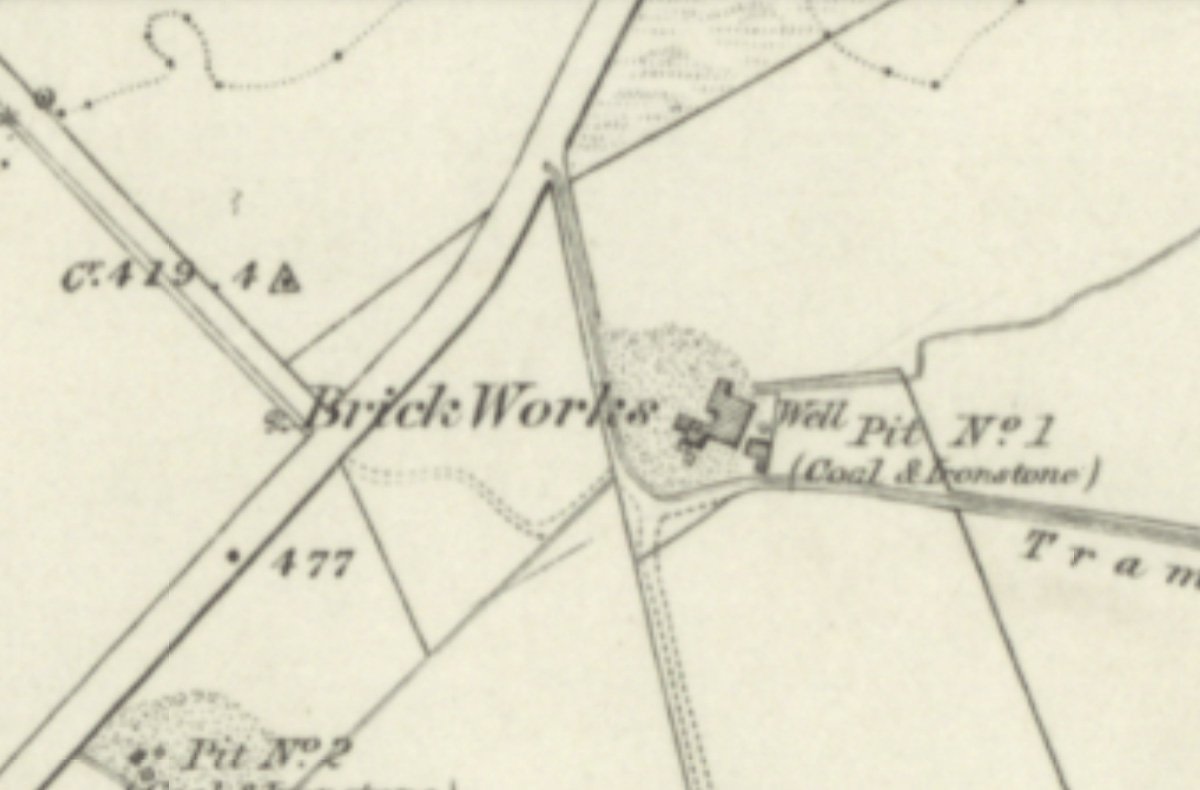
6" OS map c.1855, courtesy National Library of Scotland
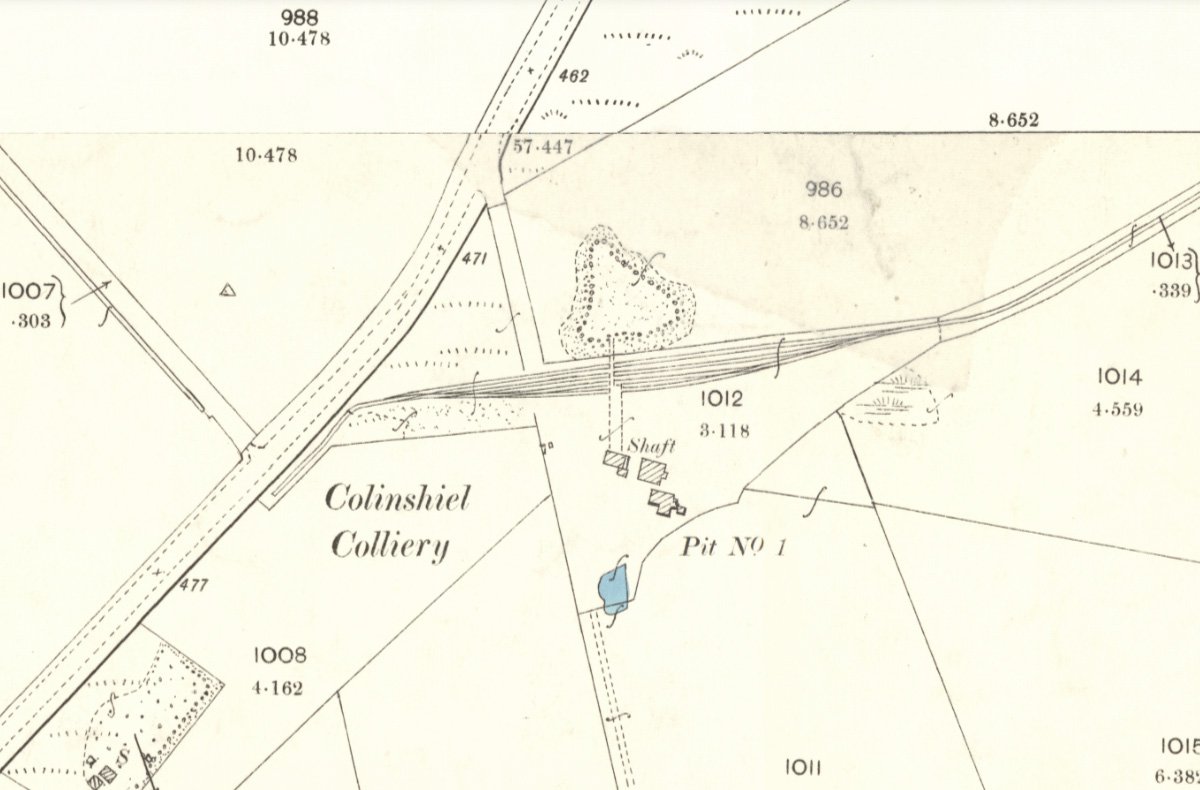
25" OS map c.1895, courtesy National Library of Scotland
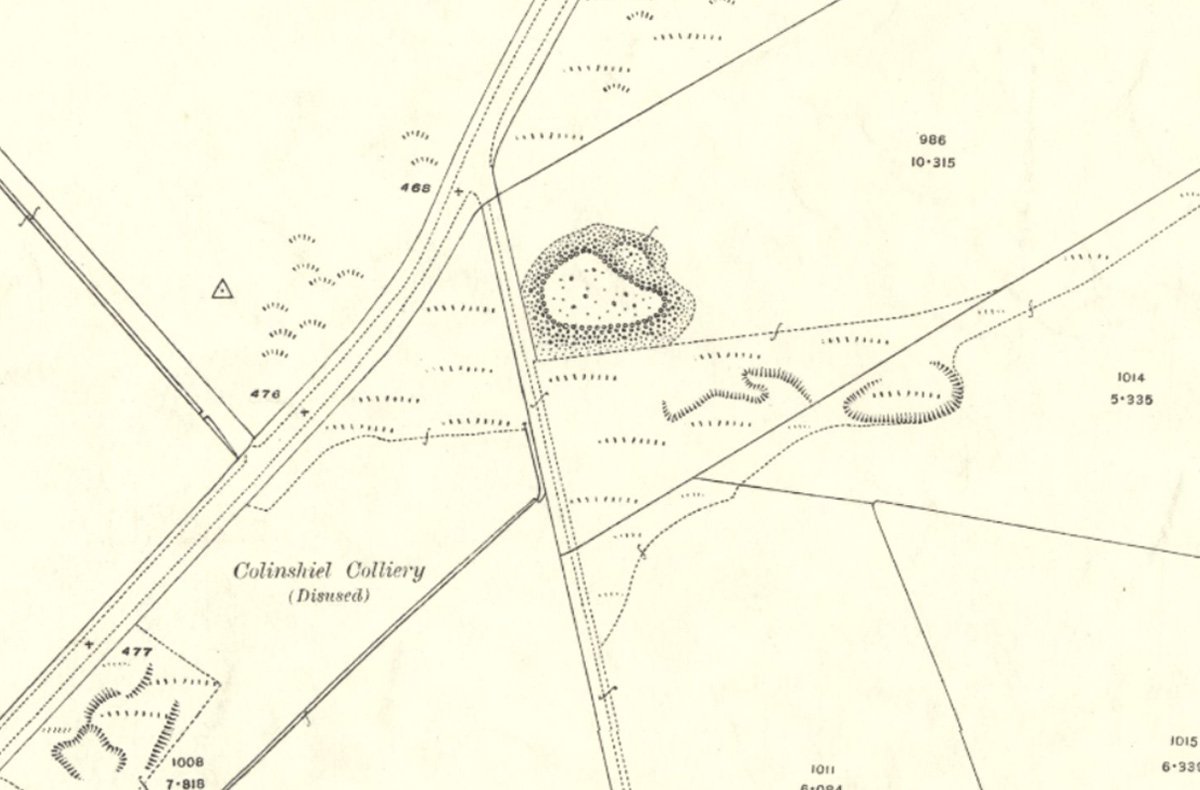
25" OS map c.1914, courtesy National Library of Scotland
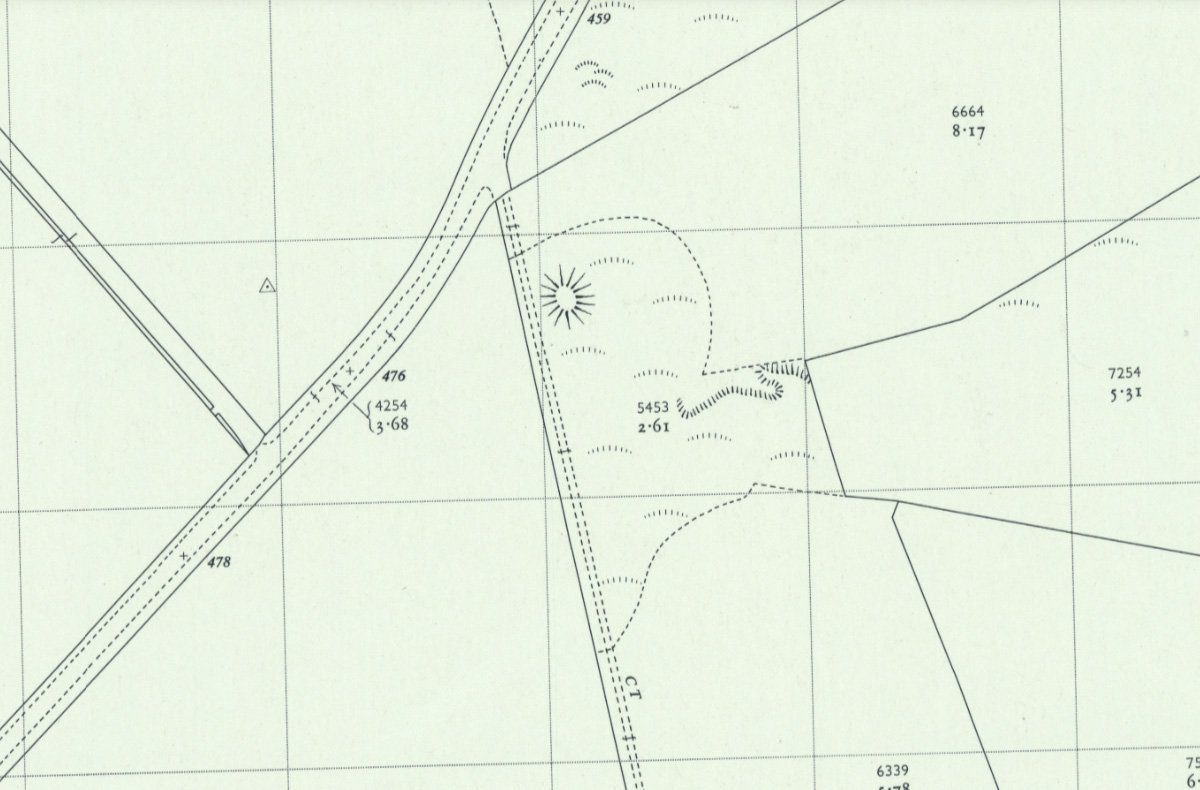
1:2500" OS map c.1956, courtesy National Library of Scotland
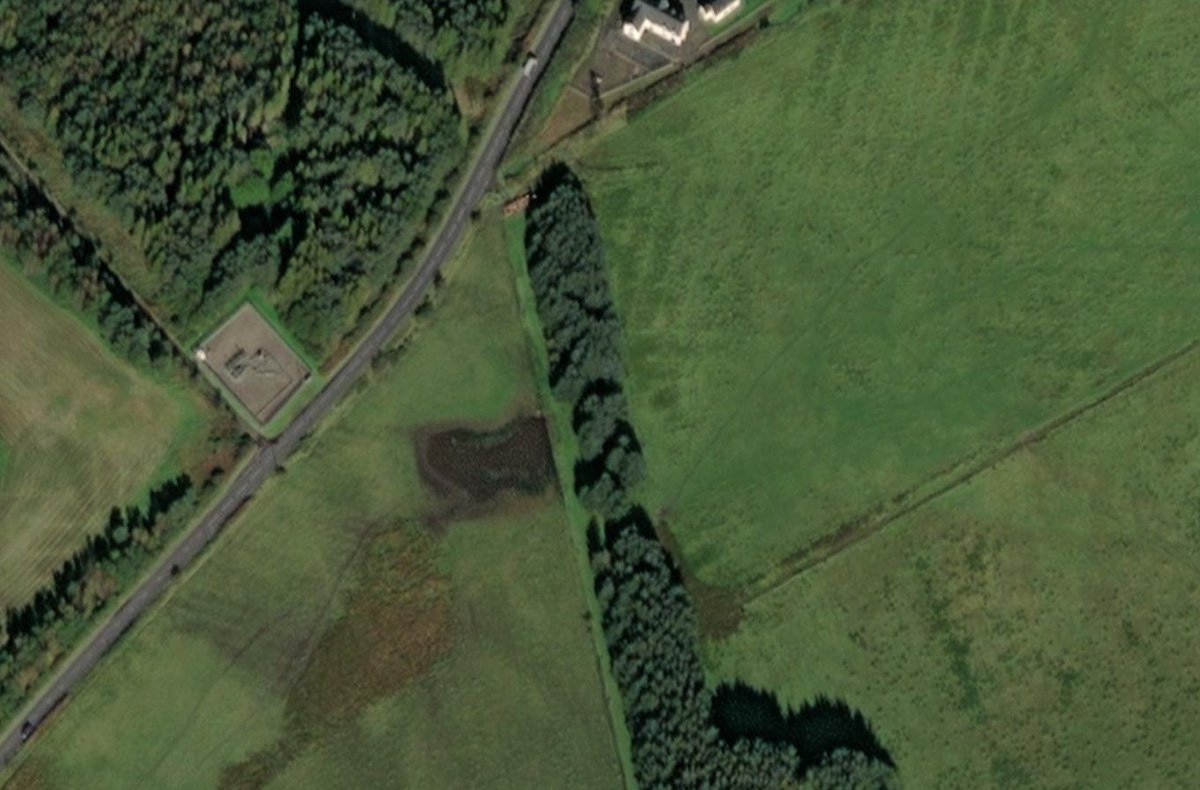
Aerial view
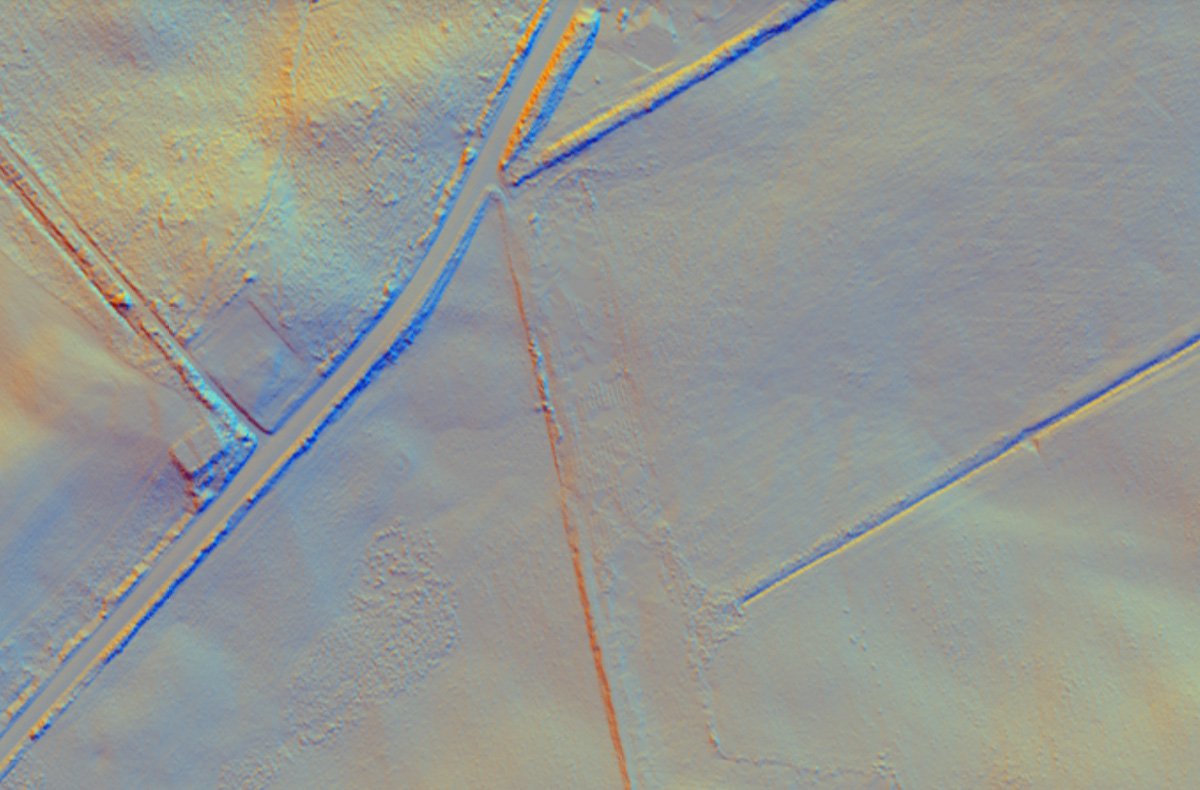
Lidar view
References
COAL-WORK TO BE LET
THE COAL-WORK of COLLINSHIEL on the Estate of Couston, in the parish of Bathgate and county of Linlithgow, for such a number of years as may be agreed on, with immediate entry. The Coal is well known to be of good quality, and has for upwards of twenty years commanded a ready sale . It is within two miles of the populous town of Bathgate, and in the immediate neighbourhood of large Limeworks, where it has been extensively used . A Pit was lately sunk, and a new Engine, with all the necessary machinery, erected at great expense, and which is in complete working order. The Seam of Coal at present working is betwixt three and four feet thick , and it is understood the farther it is wrought to the south of the pit it will increase in thickness. The roads are good in all directions, and it has been ascertained that there is a Coal about ten fathoms below the seam now working, known by the name of the Collinbum Coal, which is equal in quality to any Coal in the county of Linlithgow. Apply to Gibson-Craigs, Dalziel, & Brodie , W. S ., Edinburgh , by whom sealed offers will be received between and the 10th of March curt; but the Proprietor will not be bound to accept the highest or any other than he considers an eligible offer. Edinburgh, 3d March 1845
The Scotsman, 5th March 1845
.......
CLAY MILL, BOILER, AND OTHER MACHINERY, AT COLINSHIEL BRICKWORK, near BATHGATE, FOR SALE. To be Sold, by Private Tender,
WHOLE MACHINERY and IRON WORK, formerly in use the Colinshiel Brickwork the Estate of Couston, consisting of Clay Mill, Steam Boiler, Pipes, Mounting and Furnace Atmospheric Engine Cylinder; Cast Iron Frame, Piston, and Rod Horse-Shoe Boiler, Bell Crank, Pump Rods and Pirn Centres, with Driving Spur Wheels and Engine Gig complete ; Pit Pumps, Plates, and other Iron Work. The Whole of the Old Buildings and Roofing Materials are to be Reserved. Offers to be lodged with Messrs Glen & Henderson, Solicitors, Linlithgow, on or before April curt. The Proprietor shall not be bound to accept the highest or any offer. Linlithgow, 2d April, 1878.
Falkirk Herald 4th April 1878
.......
ARMADALE: PAST AND PRESENT. FROM ITS FOUNDATION TO THE PRESENT DAY. (By R. HYND BROWN).
Meantime Captain Sandilands, of South Couston, began to turn his attention to the abandoned pits of the Carron Iron Company on his estate. The Clay Pit, as it was known, on Colinshiel Farm, from the fact that it supplied clay to the brick work, was inaccessible on account of the large quantity of water that had accumulated in the workings, and accordingly large atmospheric engine was erected to pump the water. (This engine stood in high stone house, with large wooden beam projecting from the wall at the top, about the year 1877, when it was broken up and sold for old iron.)
Engines of that type were commonly used at that time for pumping and raising the minerals to the surface, but this engine was adapted for pumping only. Captain Sandilands, however, after getting the water out of the workings, discovered that he required the engine to wind the coal to the top, and made his mind to have it applied to the double purpose. The engineer told him that it would require a greater steam pressure than the engine was built for to do the work, but the captain was sure that if the pressure was raised the engine would manage all right, and so gave the engineman orders to raise the pressure. The order was carried out, but the result was that the piston was blown up through the roof of the engine-house, there being no cover on these cylinders. The normal steam pressure of this engine was from 2 to 3 pounds to the square inch, and the pressure required do the work demanded the captain was about 7 lb. to the square inch. The difficulty of raising the coal was soon got over, and Captain Sandilands became factor in the district the competition in the coal market until the district began to attract large companies.
Linlithgowshire Gazette, 11th May 1906
.......
ARMADALE: PAST AND PRESENT. FROM ITS FOUNDATION TO THE PRESENT DAY. (By R. HYND BROWN).
On the Shotts Company finishing their lease of the Polkemmet minerals, Mr. Wood entered into possession of the coal field, which had hitherto been little touched. Several old pits on the north-east side of Barbauchlaw were also re-opened by Mr. Wood. Even Colinshiel was re-opened by him, after three companies had given it up, and, indeed, all these old pits seemed to yield more profit and employ more men under Mr. Wood's operations than at any other time. .
.......
Colinshiel Pit at last stops on Saturday. Only four men are to left to work out a pocket of ironstone that will last about two weeks.
Linlithgowshire Gazette 30th December 1904
.......
If over there was any hope of South Couston Colliery being reopened in the near future, I am afraid that hope may be dismissed now, since staff of men nave been engaged this week filling up the shaft. It is 150 years since the pit was sunk by the Carron Iron Company, after which it passed to Captain Sanderson of Couston, then to the Shotts Iron Company, then to James Wood of Bathville, and finally the United Collieries Company. Of course, pit has not been in operation all the time.
Linlithgowshire Gazette, 8th November 1907
.......
Mr J. Logan as Burgh Surveyor in his monthly report stated: - the old shaft at Colinshiels Pit has now been filled up and a prortion of ground surrounding the same has also been levelled, all with town refuse. A start has now been made to fill up another portion of the ground close by the fece. This will take refuse for a short period. The proprietor is prepared to grant facilities to fill up aother part which is practically a small pond, but it will be necessary to put in pipe drains. consequently it may be better for the members of the Cleaning Committee to view the ground at an early date.
West Lothian Courier, 12th April 1929

